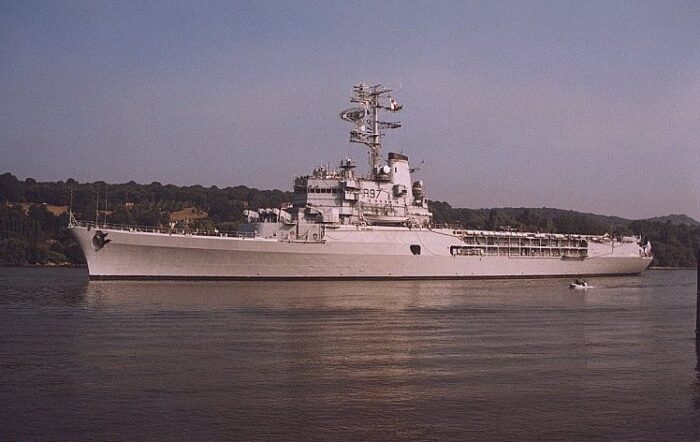
14 of July/Bastille Day update: “Jeanne d’Arc” (Joan of Arc) was a helicopter cruiser of the French Navy, 6th of the name. She was designed as a hybrid helicopter cruiser for peacetime as a training vessel, and in emergency or crisis as a fully capable ASW helicopter cruiser with six massive Super Frelon helicopters (largest in Europe). They were however rarely seen on a daily basis. Towards the end of her career, the old lady, affectionately nicknamed “La Jeanne”, became unsuitable for her role due to the increasing size and weight of helicopters. She was originally built as “La Résolue” (the resolute), as her predecessor, the previous “Jeanne d’Arc” of 1930 was still in service. She was renamed the same year when commissioned. Being retired in May 2010, decommissioned in September 2010, she became the dean of helicopter cruisers in the world and after 46 ininterrupted years of service the French service record holder and known ambassador of the Marine Nationale on all oceans.
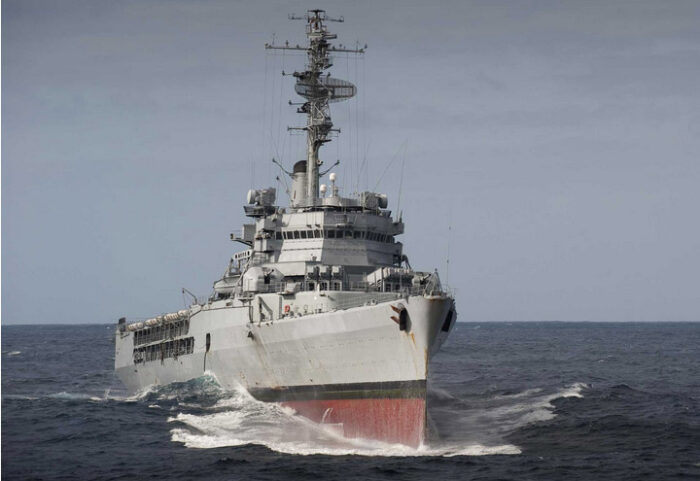
The Jeanne d’Arc (R97) was built by the Brest arsenal from 1959 to 1964. She was renamed Jeanne d’Arc on July 16, 1964 and completed her final mission on May 27, 2010, withdrawn from service on June 7, 20101. The last colors ceremony took place on September 1, 2010 and she was broken up from October 2014 in Bordeaux by Veolia, not preserved nor replaced.
Development
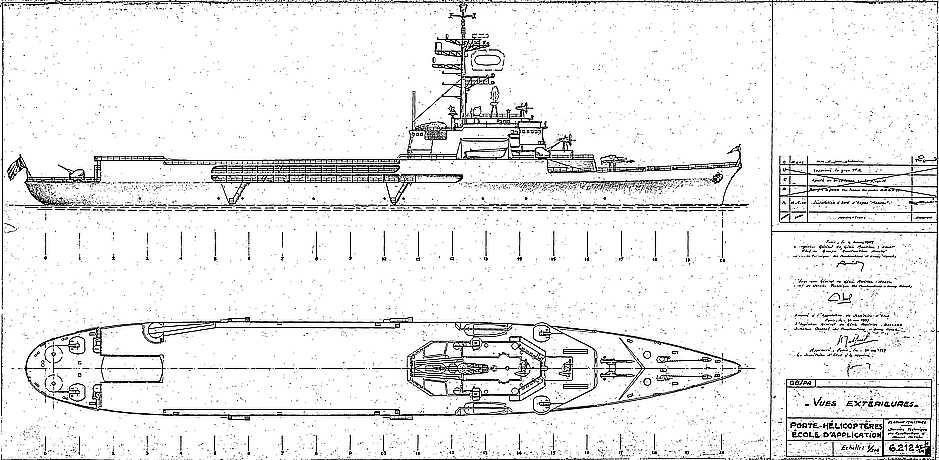
“Joan of Arc” was laid down at Brest Arsenal on July 7, 1960, launched on September 30, 1961 as “La Résolue” until the former name was freed. When this started, development of a replacement for the previous schoolship was underway in 1950s already. Some suggested to use a transformed flotilla aviso escorteur but it 1956 it was decided to create specialized helicopter cruiser usable for ASW amphibious assaul/troop transport for 700 men in wartime and crisis. In 1956 indeed a new concept was rapidly emerging: The capabilities of helicopters, both for amphibious assaults (as shown in Korea) and for ASW operations in the frame of NATO, of which France was still part of. Italy was starting its own class, the Dorias in 1958, and that spurred the French naval staff to finalize the design of its dual purpose ship a bit like the former vessel that was a light cruiser for wartime. It was agreed that the new vessels would have full facilities, an internal hangar (that can double as classrooms) with large spaces ideal for reconfigurations. The rest of the ship comprised spaced for cadet’s shared cabins, spread along the hangar like the former vessel had it along its sides.
Work on the design quickly saw ideal the formula of a hybrid cruiser, with dual artillery forward and helicopters aft, including several xial spots due to the limited beam and for stability reasons, and an axial hangar at its end.
Joan of Arc was intended for peacetime, training duties for Marine Officers’ Training School group (GEAOM), and function at all time with an air group of at least two ASW/SAR helicopters. It was reaoned in the 1970 the Army could use her for overseas deployment, sporting two Puma troop helicopters and 2 attack Gazelle helicopters from the Army’s Light Aviation land (ALAT), and for most her carrier she carried two Alouette III helicopters from the 22S squadron Naval Aviation squadron. In times of war in anti-submarine warfare configuration she was tailored to carry the new Aerospatiale SA 321 Super Frelon heavy helicopters (up to 8, 6 in hangar, 2 on deck, making way of the classrooms, or eight or ten smaller WG 13 Lynx helicopters from 1975. As part of an amphibious force she could project up to 4 Puma and 4 Gazelle plus accomodations for enough troops (a full batallion) to be carried deployed in two waves or more. That included jeeps, mortars and light artillery that could be sling to shore by the Pumas.
The design was finalized as PH57 in 1960, adopting a hull form based the rebuilt cruiser Colbert with a conventional cruiser superstructure forward large enough to accomodate all command and control facilities, plus boiler uptakes, leaving an helicopter deck free for use over roughly half the ship’s lenght beneath which was located the hangar and aviation facilities. Arsenal de Brest was chosen and her keel laid down in August 1960.
Design of the class
So the “Jeanne” seemed like shortened Colbert with a flight deck occupying 50% of her lenght, but stopping short of her bow. The upper bow deck was quite high with with bulwark to face north Atlantic or Antarctic weather if needed (and she rounded the Cape and Horn many times in her career). All her armament was even placed higher up close to the bridge. The latter was a three faceted massive tower like structure, with a fully enclose navigation bridge and admirakty bridge above, open. The compact superstructure was 6-faceted, supported three radars, and the main mast at its rear and ending with a single, narrow and wing-shaped funnel. The single mast Initially supported with the bridge an Electronic equipment similar to that aboard the Clemenceau class carriers.
She had a Sonar and the initial blueprints showed now only four forward 100 mm guns, but also a quadruple 305mm ASW mortar mounted on the forecastle, never fitted. Later it was also planned to replace the mortar by a Masurca SAM launcher but due to stability issues this was never done.
In 1974, however at least six MM38 Exocet launchers were installed. Againk it was planned to fit her with a Crotale SAM system and SENIT-2 tactical data system but budget uts prevented this in the early 1990s. That’s why she remained woefully underarmed for her size and cruiser status.
The bridge structure also housed the action information centre and a control centre for amphibious landing operations as well as an helicopter control bridge just abaft the funnel.
Later in her service, from 1980 she was optimized for assault and carried a single landing craft located on her starboard side helideck, close to the aft bridge.
Hull and general design
Protection
Apart the usual ASW bulkheads, longitudinal and transverse to protect the machinery from flooding, and optional NBC protection, she had no armour. Instead she relied on active protection, her four main guns initially, later her exocet missiles, and the addition of two Syllex decoy Rocket Launchers in 2000. In 1984 she only had electronic warfare protection in the shape of the ARBR-16, and ARBX-10 ECM suites.
Powerplant
High speed was not a tactical requirement and so her propulsion machinery was reduced compared to the Colbert, with two Rateau-Bretagne geared steam turbines within the separated main machinery spaces, each fed by two Penhöet double ended boilers. The latter and turbine were separated by a single bulkhead. This gave her a total of 40,000 hp, for a nominal speed of 26.5 knots juged satisfying for her main role, which was not to keep up with the fleet but rather independent operations with slower amphibious forces or being her own ASW task group command ship.
She also carried 1,360 tons of fuel oil for 6,000 nm at 15 knots, knowing her role as training ship includded a dozens of stops on average in her 6-months cruises.
After sea trials, the funnel was heightened to clear the bridge structure of any smoke.
Armament
Main: 2x 100 mm/55 m53
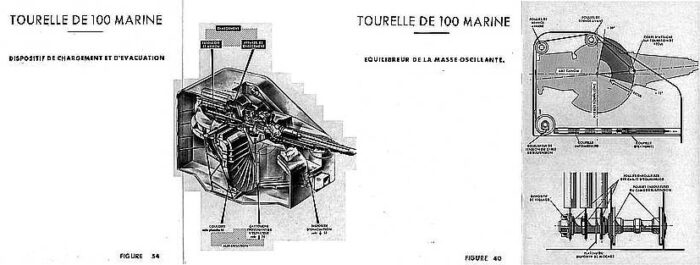
As “La Résolue” she was armed with four dual purpose guns, two forward on her upper structure, either side of the bridge and not superfiring forward. In fact her bow deck was completely flush of any armament, which was rare. Her two aft guns were installed on her lower aft deck, against on port and starboard. Their arc of fire was even more limited. The model 1953 was the earliest of the unbiquitous French 100mm (also used by others nations like West Germany on the Deutschland, Hamburg, Köln classes).
They were installed on the French Clemenceau (R98), Commandant Rivière (F733), La Galissonnière (T56), and Suffren (D602) classes.
The M1953 was semi-automated and radar-guided with proximity fuses ammunition, either a OEA F1 HE: 29.8 lbs. (13.5 kg), OPF F4 PFHE: 29.8 lbs. (13.5 kg) or Illumination shell 1: 29.8 lbs. (13.5 kg). Each complet round weighted 51.8 lbs. (23.5 kg) with a HE: 2.4 lbs. (1.1 kg) of PFHE 2.2 lbs. (1.0 kg) bursting charge. There was a below deck carousel with 32 ready rounds and a hoist which ran up from the magazine for 20 rounds per minute, 60 sustained for a prolongated burst. She carried c800 rounds per gun.
In 2000 her aft guns were removed.
⚙ specifications CANNON |
|
| Weight | 22 tonnes (49,000 lb) |
| Barrel lenght | 216.5 in (5.500 m) |
| Elevation/Traverse | -5/+90°, -150/+150° |
| Loading system | Semi Auto |
| Muzzle velocity | 2,844 fps (867 mps) |
| Range | 18,876 yards (17,260 m)/45°, ceiling 19,700 feet (6,000 m) |
| Guidance | Radar, DRBC-32 A |
| Crew | 2 (1968) |
| Round | 42.7 in (108.5 cm), 51.8 lbs. (23.5 kg) |
| Rate of Fire | 60 rounds per minute |
Exocet SSM (from)
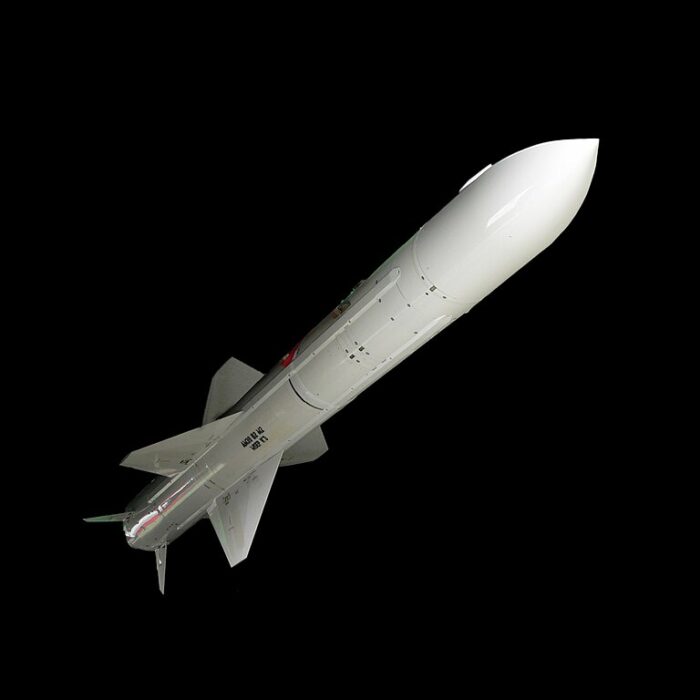
This missile had a rocket engine until Block 3 (2000s) using a Microturbo TRI 40 turbojet for much greater range. It was guided by inertial and wave height tracking and then the active radar seeker took on after 24 km for the terminal attack. This it was very difficult to detect the Exocet by surface vessels, staying below the radar detection bubble and only decected when it activated its terminal active radar making each second to activate countermeasures count. It could still also start evasive maneuvers and had electronic countermeasures to thwart decoys. The impact was below the waterline, setup to explode inside the ship with a slight delay. The gioal was not so sink but put out of action a frigate size vessel, or even a destroyer, as shown in the Falklands.
The Jeanne had three on either side of her upper foredeck, angled outwards.
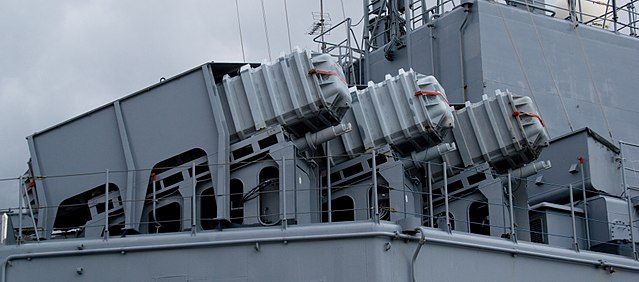
⚙ specifications MISSILE |
|
| Weight | 670 to 870 kg depending on the version |
| Dimensions | 4.7 m x 0.35 m wp 1.10 m |
| Propulsion | Solid rocket motor |
| Speed | 315 m/s (Mach 0.9) |
| Range | 42 km MM38 |
| Guidance | Inertial Guidance, active radar for terminal attack |
| Ceiling | cruising altitude 2 m |
| Detonation | Detonation impact + delay |
| Payload | 165 kg HE |
Sensors
DRBV-22 D naval radar
DRBV-51 radar
2x radars Racal Decca DRBN-34
4x DRBC-32 A radars
Sonar DUBV-24
ARBR-16 detector
ARBX-10 interceptor
1x trailered burner SLQ-25 Nixie
TACAN: NRBP-20
1x friend-enemy identification system NRBI-50
Note, data is lacking on all of these. Future upgrade planned.
Air Group
In peacetime, Jeanne d’Arc had its naval officers’ application academy accomofation taking extra space in the hangar, so her regular aerial group was reduced over time, at fist two two or more ASW Alouette III helicopter (see below) and up to four Sikorsky SH troop transports, later two Aérospatiale Puma and two Aérospatiale Gazelle French Army light aviation helicopters, the first as troop taxis, the second as attack models as escorts and for close support. Her anti-submarine warfare role at first included a wartime complement of eight Super-Frelon (“super hornet”) from 1964 to 1975 roughly, then the same numbers of WG 13 Lynx helicopters. They took more space so this virtually ended her training role. As designed she could carry roughly 10 light or heavy helicopters in all, four large in the hangar when all facilities were reclaimed, while on the deck handle the takeoff and landing of 3 helicopters. When cadets facilities were removed, she had space for four Super Frelon helicopters, blades folded, parked side by side. Given the capacity of the helicopter and possibility to three more on deck, plus up to four of the nimble Alouette III on the deck corners, that meant up to 15 helicopters at the extreme, 11 heavy, four light. In ASW missions she could have cycled her deck/hangar helicopters to have permamently three in the air, extending wildly her coverage.
Her landing deck had four axial landing pads, three main, the outer ones having doubled makings, numeroted. The single centreline lift had a 12t capacity, so one ton shy of the max weight of the Super Frelon’s takeoff weight. Originally the hangar was projected from the after end of the flight deck, but it was lenghtened during final design phase and encompassed her as well. The space benath the lift well provided extra repair and inspection workshops as well as handling rooms for aircraft ordnance that can be mounted on deck. It seems she had no towing vehicle on deck.
She had a heavy duty crane (capable of recovering the 10-13 tonnes Super Frelon) on her port side in a recess along the deck, and a single 15 tonnes capacity lift aft of the hangar and 62 x 21m flight deck (203 x 69 ft). Pumps for avgas were located in the hangar, where the armament was also mounted. The hangar was also fully enclosed apart the rear opening, which can be sealed by a metal shutter in NBC configuration.
SA 321 Super Frelon (1962)
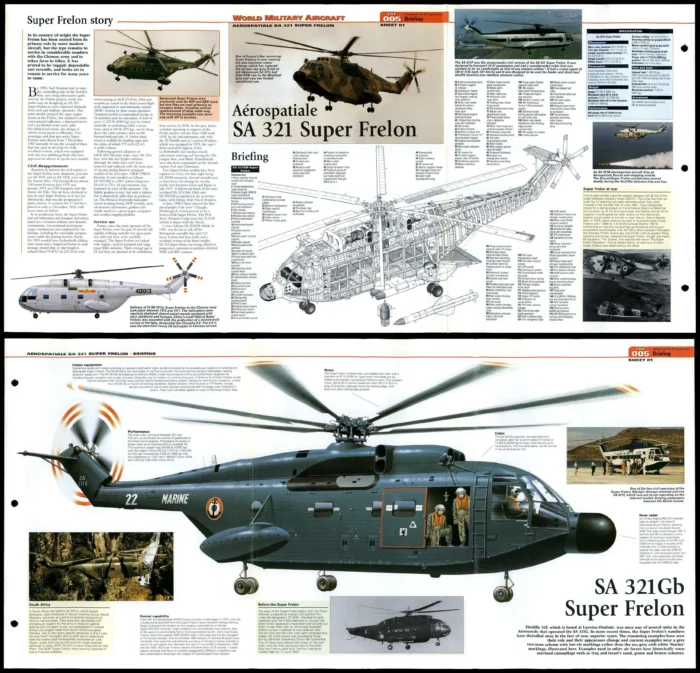
A true beast of helicopter as far as European standard went, this cross between a Sea King and Stallion was indeed capable of landing and taking off at sea if needed, making her quite versartile. Powered by three Turboméca Turmo IIIC turboshafts, 1,160 kW (1,550 shp) each and hold at her time a load and speed record at 275 km/h (171 mph, 148 kn). She was capable of carrying 28 troops, 15 stretchers, but also diverse armaments for anti-ships and anti-submarine missions.
Aerospatiale SA 321 specifications:
Length: 23.03 m (75 ft 7 in) overall, fuselage 19.40 m (63 ft 8 in), Height: 6.66 m (21 ft 10 in)
Empty weight: 6,863 kg (15,130 lb), TO 13,000 kg (28,660 lb), Fuel capacity: 3,975 L (1,050 US gal; 874 imp gal)
Powerplant 3480 KW/4650 hp, 249 km/h (155 mph, 134 kn) at sea level, ferry range 1,020 km (630 mi, 550 nmi) or 4 hr endurance, ceiling 3,150 m (10,330 ft), climb rate 6.66 m/s (1,312 ft/min)
She could be armed by four homing torpedoes (and carrying 60+ buoys, later a dipping airborne sonar) for ASW role or two Exocet missiles in anti-ship role. In wartime for such attack with eight helicopter this would mean sixteen Exocet, plus the six she carried herself from 1974 onwards.
Alouette III
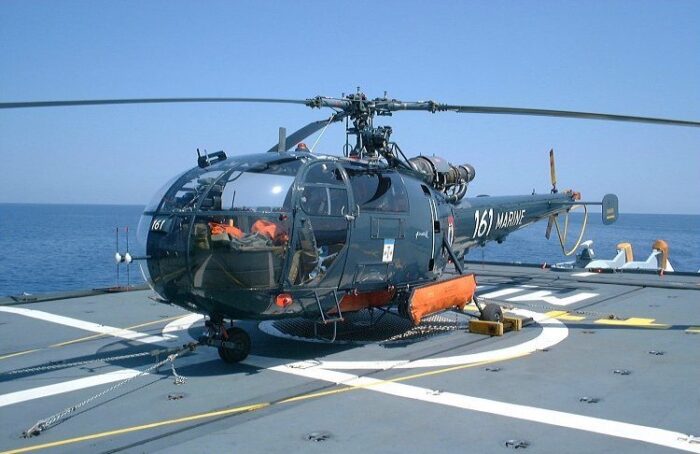
This model was also contempprary to Jeanne d’Arc and stayed active until her retirement in 2010, mostly for weight issues; She was much lighter indeed that the Super Frelon or any other model and on par with the nimble Gazelle. At least two were carried at all times, four earlier in her career, usually from Flotille 22F.
Specs SA319: Crew: 2 +5 passengers, 10.03 x 3 m, rotor 11.02 m (36 ft 2 in). Empty weight 1,143 kg (2,520 lb), gross 2,200 kg (4,850 lb).
Powered by a Turbomeca Artouste IIIB turboshaft 649 kW (870 hp) for 210 km/h (130 mph, 110 kn) at sea level, range 540 km (340 mi, 290 nmi), ceiling: 3,200 m (10,500 ft).
She was usually unarmed, used for liaison and SAR (search and recue) missions. For this she carried divers and had an external winch. She also could carry two boards or stretchers externally.
The army version if needed could carry four anti-tank missiles SS.11 MCLOS in complement to the Gazelle. The Chilean configuration was capable of carrying depth charges and a single light anti-submarine torpedo if the French version needed to be reconfigured.
We are not going to dwelve on the Puma/Super Puma, Sikorsky SH and Gazelle as they were army helicopter and not relevant to this topic.
The W13 Lynx gradually imposed itself as an alternative to the Super Frelon on board from 1975 but only made few appareance during her sevrice. It had a full ASW panoply, with buoys and two homing torpedoes. See previous French articles for more such as the Tourville class Frigates.

Author’s illustration, as of 1980
⚙ Jeanne d’Arc 1974 |
|
| Displacement | 10,575 tons standard, 12,365 tons FL |
| Dimensions | 182 x 24 x 7.5 m (597 ft x 79 ft x 25 ft) |
| Propulsion | 4x shafts GST, 4 boilers, 10,000 horsepower (7.5 MW) 29 420 kW |
| Speed | 28 knots (52 km/h; 32 mph) |
| Range | 3,000 nmi/26.5 kn or 6,800 nmi/16 kn |
| Armament | 2× 100 mm gun, 6× Exocet-38 SSM, 4× 0.5 in HMG |
| Protection | Nixie; chaff RL, EW suite |
| Sensors | DRBV 22 D, DRBV51A, 2x DRBN34, DRBC32A, Sonar DUBV24, Inmarsat |
| Air Group | 4 Super Frelon (8 in war) |
| Crew | 627 (total), 31 officers, 182 petty officers, 414 quartermasters and sailors, 150 cadet officers |
Upgrades
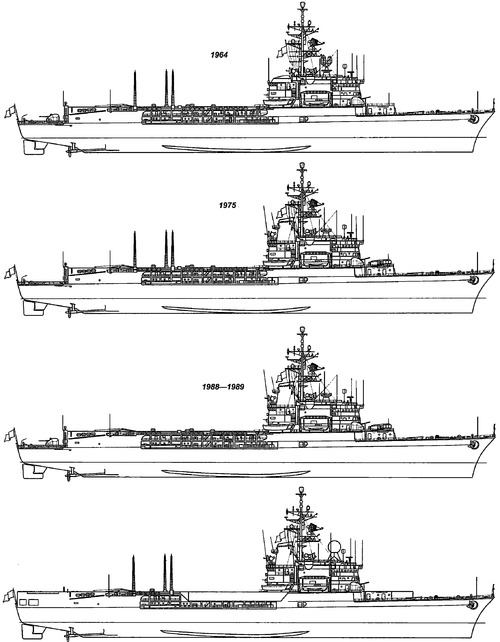
There were not many. In 1974 she had six Exocet MM38 SSM (6 Exocet MM38) installed in two groups of three canisters installed on her uppr forward deck at the foot of her bridge.
In 1984 her DRBI-10 radar and SQS-503 sonar were replmaced by the more capable DUBV-24 sonar as well as the ARBR-16 and ARBX-10 ECM (AW) suites at least giving her a chance against modern missiles.
In 1990 her DRBV-50 radar was replaced by the DRBV-51. In 2000 she had two 100mm/55 aft guns removed, two Syllex decoy RL installed in their place and two 12.7 mm HMG Browning installed on her bridge to deal with asymetric threats. Still she was considered largely obsolete by that time and under-armed for her size. She never received better chaff dispesers, not a small Manpad style SAM like the Mistral for some anti-air protection. It seems that her main forward guns were replaced by model 1968 ones at some point, which had a better rate of fire.
Today, from 2010 and as of 2024 the naval school’s student officers training still consists in six months on land, and six month at sea, in what is called the “Jeanne d’Arc mission” aboard an amphibious helicopter carrier (PHA) of the BPC Mistral type escorted by a stealth La Fayette class frigate. Deployments are still across the globe and in sensitive areas, so she takes part also in joint exercises when the need arose. But the incarnation is no longer through a single ship for budgetary reasons. The rotating caracter of the ships involves (the French Navy had three of them) implied one is still available for regular amphibious operation, one in maintenance or overhaul, two available more of the time, three in times of acute crisis.
Career of Jeanne d’Arc
Early Campaigns 1960-70s
Departed Brest on 12/03/1964, reached Fort de France (Carib.) on the 20th, Les Saintes and reached Philadelphia on 08 April 1964, Reykjavik on the 15th and back at Cherbourg on the 22th before sailing east to Hambourg (24-29th), Copenhagen (30/04 to 04/05) and back to Brest on 07 May. She was in short drydock maintenance and R&R.
Her 1964-65 campaign was her first world tour: Brest, Fort de France, Balboa (Panama), Marques Is., Papeete (Fr Polynesia) for Xmas 1964, Nouméa (New Caled.), Sydney and Wellington, Fremantle in January 1965, Diego Suarez (Madagascar) in February, La Réunion, Durban (S. Africa), Rio de Janeiro in March, Dakar, Lisbonne in April, and back to Brest on 08 April.
Her 165-66 was another world tour, in short Brest, Fort de France, Les Saintes, Vera Cruz, Balboa, San Francisco, Honolulu (Pearl Harbor), Tokyo, Kobe, Etajima (JMSDF Naval Academy), Hong-Kong, Manila, Tamatave/Diego Suarez/Noci Bé (Madagascar), Mombasa, Djibouti, Istanbul, Athens, and Toulon Naval Base, then back to Brest on 16 June 1966.
The next campaign was limited to he Atlantic and Mediterranean: Brest, Dakar, Rio de Janeiro, Buenos Aires, Montevideo, Punta Arenas, Callao, Balboa, New Orleans, Les Saintes, Guadeloupe, Martinique, Santa Cruz de Tenerife, Alger, Beyrouth, Corfu, Haïfa, Livorno, Toulon and Brest on 15 June 1967. She spent the rest of the summer in maintenance and Xmas in R&R.
The 1967-68 campaign was an extended Atlantic-Pacific campaign: Brest, Dakar, Abidjan, Sainte Helena, Santos Sao Paulo, Port Of Spain, Trinidad & Tobago, Papeete, Bora Bora, Papeete, San Francisco, Acapulco, Balboa, Basse Terre, Les Saintes, Fort de France, New York, Lisbon, Venice, Tunis and Brest on 31 May 1968.
This was mostly a repeat in 1968-69, Brest, Dakar, Willemstad, Cristobal, Valparaiso, Juan Fernandez, Easter Is., Mururoa/Papeete/Bora Bora (Fr Polynesia), Honolulu, Los Angeles, San Diego, Clipperton, Balboa, Cristobal, Galveston-Houston, Marie-Galante, Les Saintes, Pointe à Pitre, Fort de France, Santa Cruz de Tenerife, Naples, and Brest on 30 May 1969.
During the campaigns, the presence of an accompanying vessel (“the canner”) was necessary to improve the exercises at sea and to “give space” to the promotions which became more numerous each year; students can be transferred for a few days to a different type of ship where the conditions of service are different. The ship was naturally sponsored by the cities of Rouen, Domrémy-la-Pucelle, Nancy, Orléans, and Vaucouleurs, all placed linked to her namesake.
The 1969-70 cruise was another world tour, from Brest, Dakar, Abidjan, Pointe Noire, Durban, Diego Suarez, Port Louis, Maurice, La Réunion, Rodriguez, Jakarta, Singapour, Hong-Kong, Tokyo, Kobe,, Nouméa, Papeete, Bora Bora, Mururoa, Balboa, Saint Martin, Fort de France, Les Saintes, Boston, Saint Pierre, Québec, and Brest on 24 May 1970.
The next cruise focused on the western hemisphere, Brest, Dakar, Rio de Janeiro, Montevideo, Puerto Belgrano, Orange By, Portescue, Valparaiso, Juan Fernandez, Easter Is., Mururoa, Papeete, Bora Bora, Nuku Hiva, San Francisco, Acapulco, Balboa, New Orleans, Fort de France, Casablanca, Corsidca, Trieste, Split, Tunis, and back to Brest on 19 May.
Same in October 1971 Brest, La Horta, Fort de France, Saint Barthélémy, Saint Martin, Basse Terre, Rodman, Callao, Pitcairn, Gambiers, Mururoa, Papeete, Raïatea, Wellington, Sydney, Nouméa, Lifu, Bali, Surabaya, Singapore, Penang, Colombo, Bombay, Karachi, Djibouti, Moroni, Diego Suarez, Cape Town, Saint Helena, Monogaga, Abidjan, Dakar, and Brest on 18 May.
In 1972-73 saw another west and Med cruise, from Brest, Lisbon, Dakar, Rio de Janeiro, Buenos Aires, Chiloe, Valparaiso, Juan Fernandez, Easter, Pitcairn, Gambiers, Mururoa, Papeete, Bora Bora, Honolulu, Vancouver, San Francisco, Mazatlan, Panama, Les Saintes, Fort de France, La Dominique, Madeira, Barcelona, Athens, Santorin, Patnos, Lemnos, Istambul, Naples, and Brest on 23 May 1973.
She had an overhaul in 1974 and received her exocet missiles, a powerful and overdue complement.
Her 1973-74 one was another world tour via Panama and Asia, in 74-75 she made a mostly western/south American tour including the US West Coast. In 1975-76 she toures for the first time Mostly Asia from the Cape and via the red sea and Med. In 1976-77, she made amostly pacific tour, vian the Carribean and Panama, adding Darwin and Manzanillo to her destinations, and in 77-78 she made an Oceanian tour, focusing via Suez to Australia and Indian Ocean. In 78-79 she made a western tour via Panama, south america and the east/west US coasts. She was still homeported to Brest at that stage. In 1979-80 she focus on South America. Until 1979 her usual air park comprised four Sikorsky S58/H34 (HSS in French denomination) and three Alouette III. From her 1979-80 campaign she rmbarked Flotille 35F and four brand new Lynx which replaced the Sikorkis, but she kept her Alouettes.
Late cold war Campaigns 1980-90s
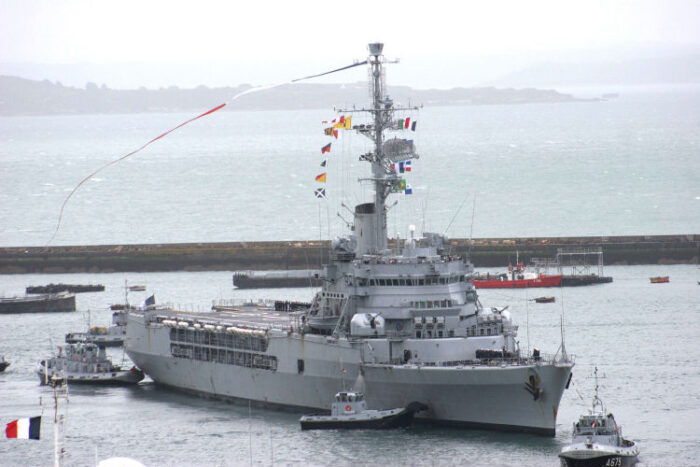
Jeanne In 2006
Her 1980-81 campaign focused on South East Asia, up to Japan. In 81-82 this was a western cruise via Panama, both American continent’s coasts and Polynesia (which was sold as an incentive and high point to the cadet sailors, especially Bora Bora which was “on the menu” nearly each year. In 1982-83 she made a world tour via Suez and Panama, and visited Peal Harbour again (substitute for French Polynesia). In 1983-84 she made purely Atlantic tour. In 1984-85 she made a world tour, adding to her destinations Guam, Inchon, Aqaba, and Alexandria. The schedule was still the same, from rainy, icy cold Brest in November to Brest in sunny (mostly) May. Her detachment was reduiced to two Lynx buy she carried a VIP transport version of the Dauphin helicopter.
Her 1985-86 campaign focused on Oceania again, she notably visited Ujung Padang, Bangkok and Karachi. By that point she had made so much ports visits she became the new French naval goodwill ambassador.
Her 86-87 cruise was center on the Atlantic again, with a high profile vist both the New York and Québec but also Kourou in French Guyana, soon to be the European spaceport. In 1987-88 she visited Asia, adding Madras, Pondichery (former French colony) and Port Victoria in the Seychelles instead of French Polynesia. The schedule was shifted to December-June. As usual the next six months were dedicated to maintenance and refits.
Her 1988-89 campaign was back to November-May and focused on the western hemisphere via Panama, with the Atlantic, the usual halt at Pearl Harbour, but also San Francisco, Puerto Rico -with a halt at the US gunnery area) adding Acapulco and Funchal to her destinations. She was also back to the “standard” helicopter format, three Luynces for ASW and three Alouettes. They all fit inside the hangar, if the need arose (storm), but leaving space for classrooms. The 1989-90 campaign focused on the Indian Ocean via the Med, still HP Brest. Sje also stopped at Plymouth, Bombay and Mascate. 35F changed format with four Alouette, two Lynxes. In 1990-91, her “End of cold war” cruise was a bit special, and she ventured as far north as Iceland and cape Horn, via Panama and Polynesia. She visited Reykjavik and Hamburg but also New York and Quebec, with a shfot to December-June. This stayed the same in 91-92 which was back to the Indian Ocean, adding Vladivostok for the first time, Cochin, Pukhet and Palermo and an helicopter park reduced to four Alouette III for both budgetary reason and to increase classroom space.
In 92-93 she made a western tour, mostly around South America and the west pacific, adding to her distinations Philadelphia and La Guaira. For the first time she took part in anamphibious exercises and Flotille 35F was rediuced to two Alouette III, while she carried an army detachment with 2 Cougar (4th RHCM) and three Gazelle (1st RHC).
In 1993-94 she made an abbreviated (November to March) tour of the Med and Insian Ocean focusing on the middle east and for a longer overhaul.
Her 1994-95 she confirmed this tendency for short tours, focusing on the Atlantic, and with the same mixed air group. After 30 years of service she was showing her age.
In 1995-96, again from November to March she carried the 4th DAM (army Helicopter detachment) in an Atlantic-Med-Baltic tour, via Miami, Haifa and Gdynia as new destinations.
In 1996-97 on the same schedule she toured the Med and Indian Ocean, southern asian waters via Beyrouth, Djeddah, Mascate and Port Kelang among others.
In 1997-98 for the first time she carried a very large cadet contingent (three classes, the “Groupe Tactique Ecole”) and a reduced air group 22S sqn. of just two Alouette III while focusing on the East African coast and red-sean west Indian ocean. In 1998-99 she made a world tour in November to April this time, as her good general condition still allowed this. In addition to 22S sqn she two Puma and three Gazelle from the 1st RHC.
In 1998-99 she made an Atlantic-African tour via Suez and New York. She also carried 3rd RHC (2 Puma, 2 Gazelle) and was back in May which was practically the lenght of her 1960s tours, quite a feat in maintenance.
Late Campaigns 2000-2010
The “Millenium campaign” was again between November and May from the 24th to the 15th, and a world tour with the same air group (this time 5th RHC). In 2001-2002 she focused on the Atlantic and Mediterranean, and included Odessa and the black sea. She carried the 1st RHC and also added Salvador the Bahia to her list. In 2002-2003 she made another world tour, pretty much repeat of the millenium tour and with the 3th RHC. She added Kure and Qingdao to her list. In 2003-2003 made an Atlantic tour with reduced air group of just two marine helicopters and two Gazelle from the Army. She also added Fortaleza and Cotonou to her list. In 2003-2004 she made an extended Atlantic (north-south) tour (plus Baltic) from Reykjavik to the Cape. She also stopp ed at St Petersburg for the first time, but also Tristan da Cunha, Luanda, Baltimore and Halifax. In 2004-05, she returned to the Indian Ocean via Meulaboh, Piraeus, Kusadasi and Bordeaux in a December-May tour. She was escorted by the Frigate Georges Leygues like her previous tours since 1998. Before that, this was the corvette Germinal, Enseigne de Vaisseau Henry until 1994, Commandant Bourdais until 1990, Doudart de Lagrée until 1983, Forbin until 1981, and Victor Schoelcher until from commissioned to 1973.
Her 2005-2006 tour focused on South America, via Punta Delgada and Saint Domingue, plus other ports she already visited, and her tour extended into June. In 2006-07 she made a Med-Indian Ocean tour, adding Along/Caï Lan and Port Louis, Cadiz to her destinations. This was a much abbeviated tour in June-July due to maintenance constraints, she was drydock and a complete refit of many installations.
2007-2008 saw her in a regular tour between November and June, between Africa via Suez and the Atlantic, the Cape, Rio de Janeiro, New York but also Rouen (as a farewell tour) and Barcelona.
In 2008, Jeanne d’Arc was deployed in an anti-piracy role in the Gulf of Aden for the first time. Still escorted by Georges Leygues for this near final tour, this half a century old ship was scheduled for retirement in 2010, waiting for replacement (see later). This tour until June 2009 saw her mostly on the Indian Ocean as far east as Jakarta, with a tour in the red sea and Abu Dhabi, Aqaba and naturally Djibouti due to her role. She still had the same air group, two Gazelle, two Alouette. The latter were now ageing as well (same generation).
She was part of the rescue effort of Le Ponant in the April 2008 hostage crisis, sending a Gazelle carrying snipers which utimately captured the pirates who escaped on 4×4 vehicles after freeing the hostages.
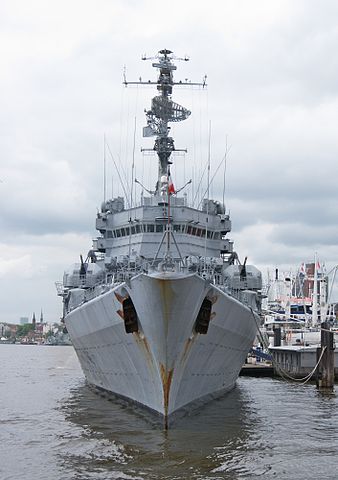 The final cruise started on December 2009, not a world tour, but an Atlantic one escorted by the frigate Courbet (F712), down to Cape Horn, Rio and Buenos Aires, Lima, Carribean, New York and Canada and back on May 2010 still in Brest on 27 May. She was also at the anniversary of the port of Hamburg in May 2010. She kept her role for midshipmen and the training squadron of 103 cadets, including 12 from 9 foreign countries. She was formally withdrawn on 7 June 2010. Disarmament was confirmed on 4 June 2010 and after became Hull Q 860, moored in Brest, École de maistrance and from 1st September 2010 she was decommissioned. On 9 September she was stricken (R 97 removed) and started scrapping, notably through asbestos decontamination via a tender for dismantling (the Navy at the time had no less that 76 hulks waiting for it). In 2014, it was decided this would be done in Bordeaux at Bartin Recycling Group/Pétrofer (Veolia Group) for 11.5 million Euros.
The final cruise started on December 2009, not a world tour, but an Atlantic one escorted by the frigate Courbet (F712), down to Cape Horn, Rio and Buenos Aires, Lima, Carribean, New York and Canada and back on May 2010 still in Brest on 27 May. She was also at the anniversary of the port of Hamburg in May 2010. She kept her role for midshipmen and the training squadron of 103 cadets, including 12 from 9 foreign countries. She was formally withdrawn on 7 June 2010. Disarmament was confirmed on 4 June 2010 and after became Hull Q 860, moored in Brest, École de maistrance and from 1st September 2010 she was decommissioned. On 9 September she was stricken (R 97 removed) and started scrapping, notably through asbestos decontamination via a tender for dismantling (the Navy at the time had no less that 76 hulks waiting for it). In 2014, it was decided this would be done in Bordeaux at Bartin Recycling Group/Pétrofer (Veolia Group) for 11.5 million Euros.
Surprisingly after she was partially dismantled, her machinery was used for a final run, on May 26, 2010 at 2 a.m., mechanics pushing the “old lady” to 30.9 knots 13 (57 km/h) off Raz Blanchard, beating her old record of 27 knots (50 km/h) on initial sea trials. Most of her machinery had been manufactured half a century ago.
Her role as training school for naval officers, projection and command ship wa staken over by the new Mistral and Tonnerre BPC (LHCs) from March 2010, alternately carrying out training missions with cadets on board as she did. Now spread between two much larger and more capable helicopter ships, these missions are still called “Jeanne d’Arc” and are likely to be carried out until the 2040s. There is no planned replacement for now and will likely be none due to today’s ships modularity.
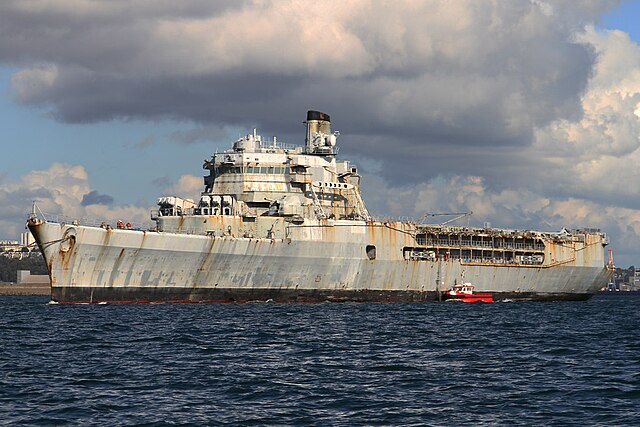
In the mothballs at Brest, 2014
The last Helicopter Cruiser
With 46 years of continuous service, she held the record for a French active ship. Her previous iteration, the 1930 Jeanne d’Arc served from 1931 to 1964, so “only” 33 years. The concept of hybrid helicopter cruiser, popular in the 1960-70s died with her. The Italian Dorias were removed in 1992, Vittorio Veneto in 2003, the two Moskva class in 1996 and the Iwo Jima class of the same generation in 2002 making “La Jeanne” the dean of that generation.
Read More/Src
Books
Collectif IFM: La Jeanne d’Arc: La grande aventure maritime, éditions Locus Solus MoD 2024
Rémi Monaque, Une histoire de la marine de guerre française, Paris, éditions Perrin, 2016
Alain Boulaire, La Marine française : De la Royale de Richelieu aux missions d’aujourd’hui, Quimper, éditions Palantines 2011
« Adieu, Jeanne, Adieu ! » Christophe Penot 2009, Éditeur d’Art
Jean-Michel Roche, Dictionnaire des bâtiments de la flotte de guerre française de Colbert à nos jours, t. II 1870-2006 Rezotel-Maury 2005
Michel Vergé-Franceschi (dir.), Dictionnaire d’Histoire maritime, Paris, éditions Robert Laffont 2002
Jean Meyer et Martine Acerra, Histoire de la marine française : des origines à nos jours, Rennes, Ouest-France 1994
Moulin, Jean (2020). Tous les porte-aéronefs en France: de 1912 à nos jours. Lela Press.
Michel Bez et Yann Le Pichon, La Jeanne d’Arc, Lavauzelle, 1994.
Axel Duroux et Jean-Marie Chourgnoz, La Jeanne, Ouest-France, 1989
Links
globalsecurity.org
en.wikipedia.org/ French cruiser Jeanne Arc_(R97)
On fr.wikipedia.org
archives.defense.gouv.fr jeanne-d-arc
shipspotting.com/
3dhistory.de/ plans
netmarine.net/ campagnes
meretmarine.com
netmarine.net
lemonde.fr/ French commandos somalia
lemarin.ouest-france.fr Jeanne’s scrapping
http://www.navweaps.com/Weapons/WNFR_39-55_m1953.php
Videos
Model Kits
https://www.scalemates.com/kits/revell-05896-french-helicopter-carrier-jeanne-d-arc-r97–139832

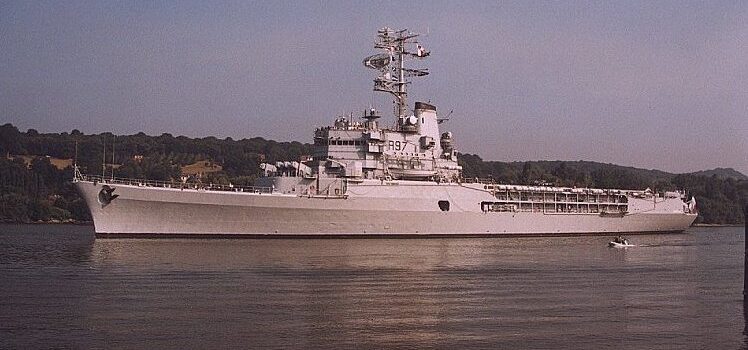

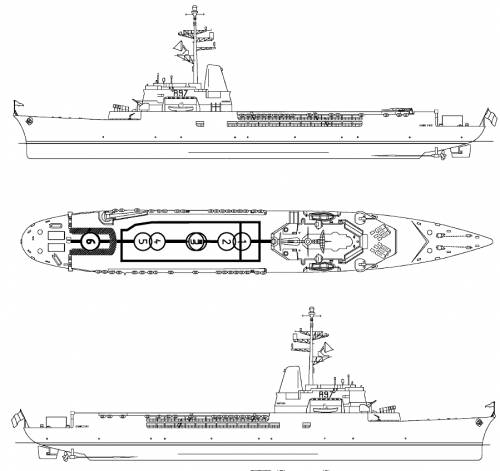
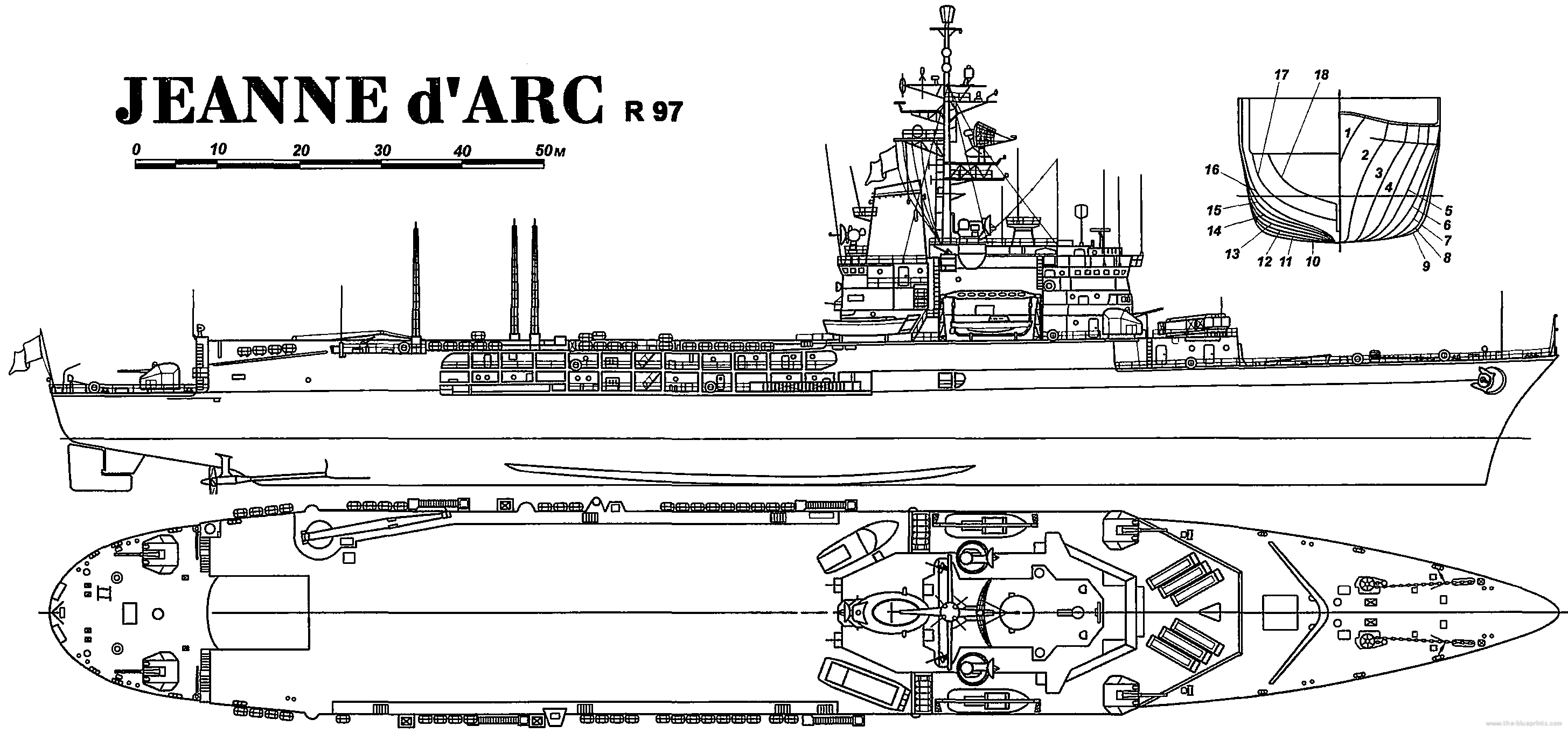

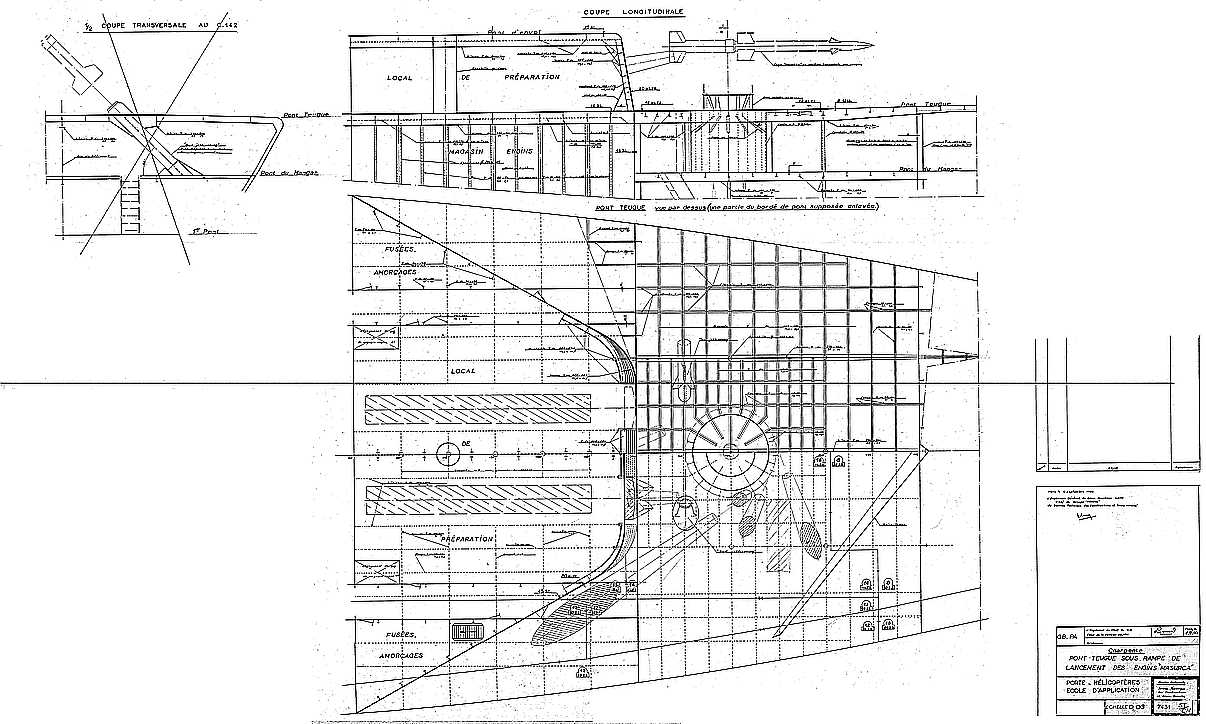
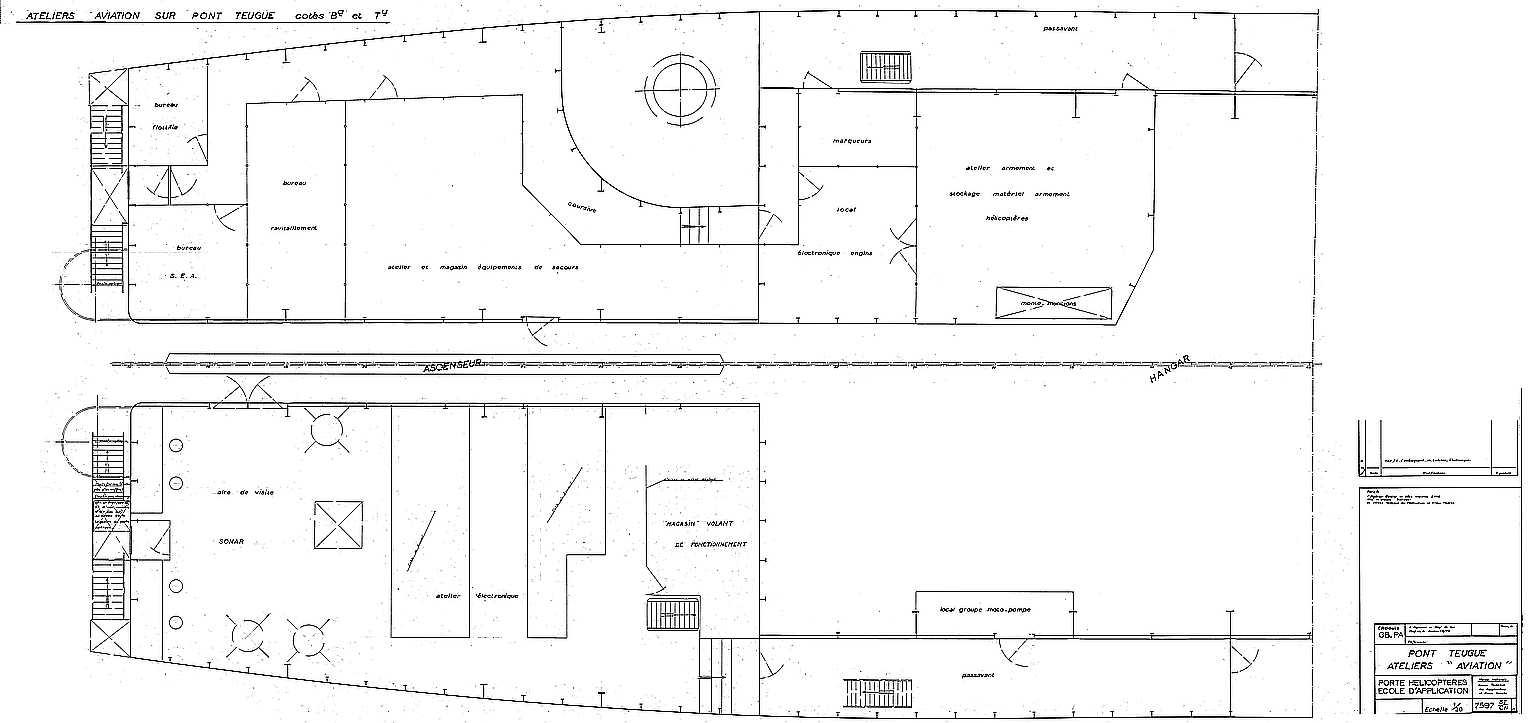
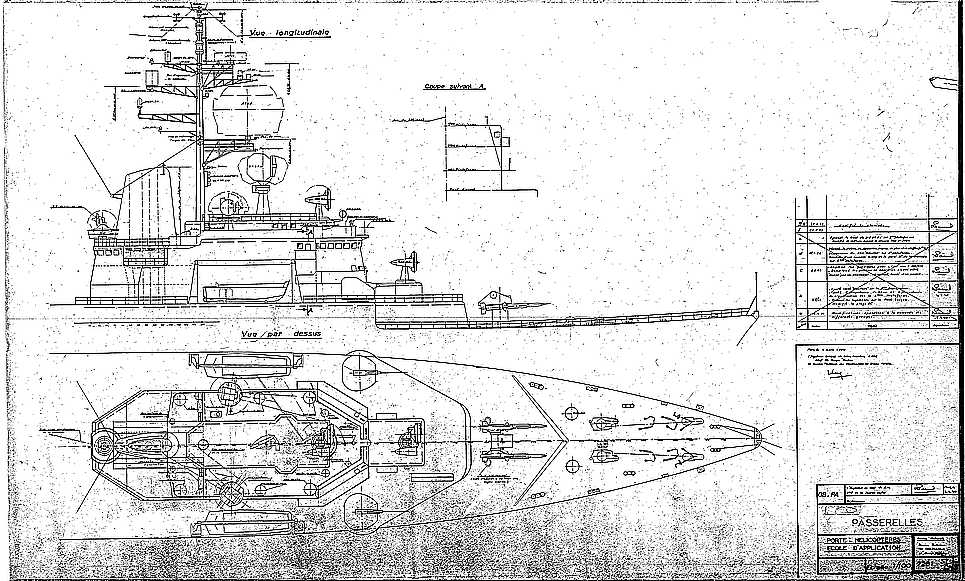

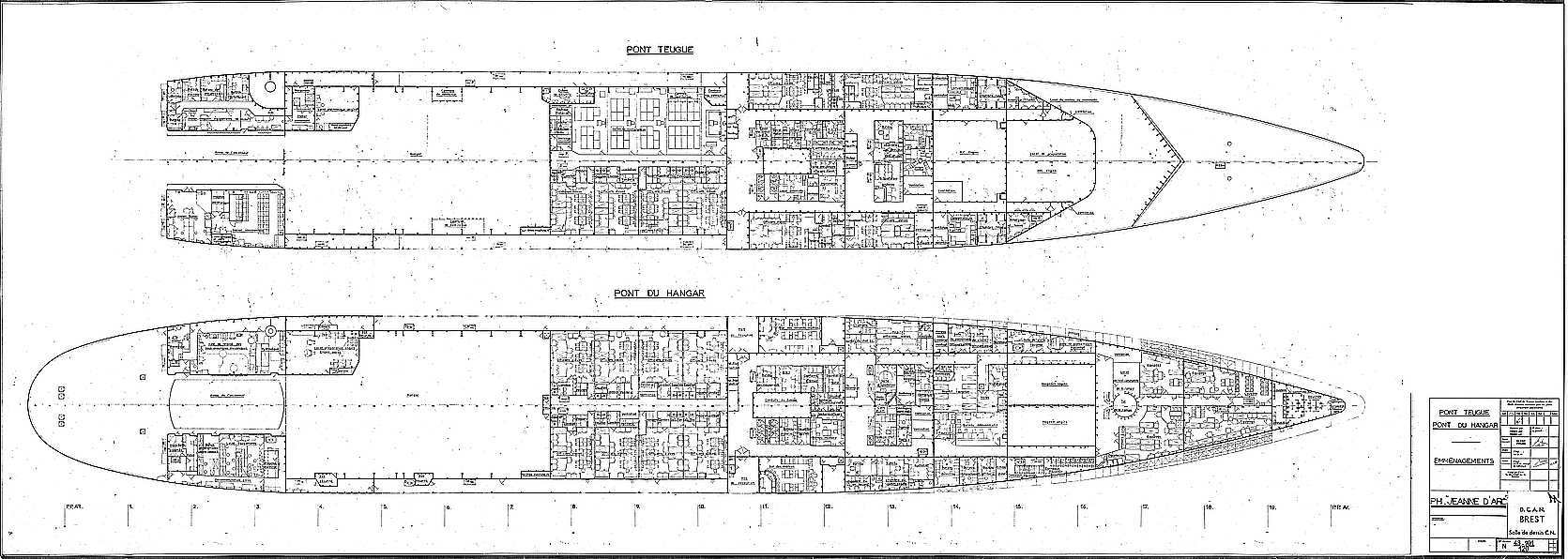
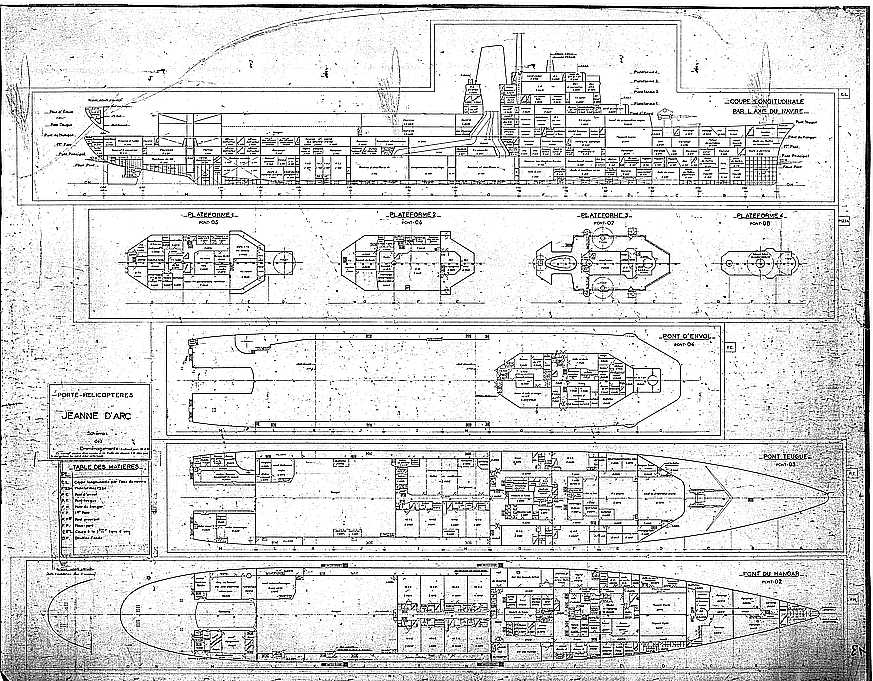
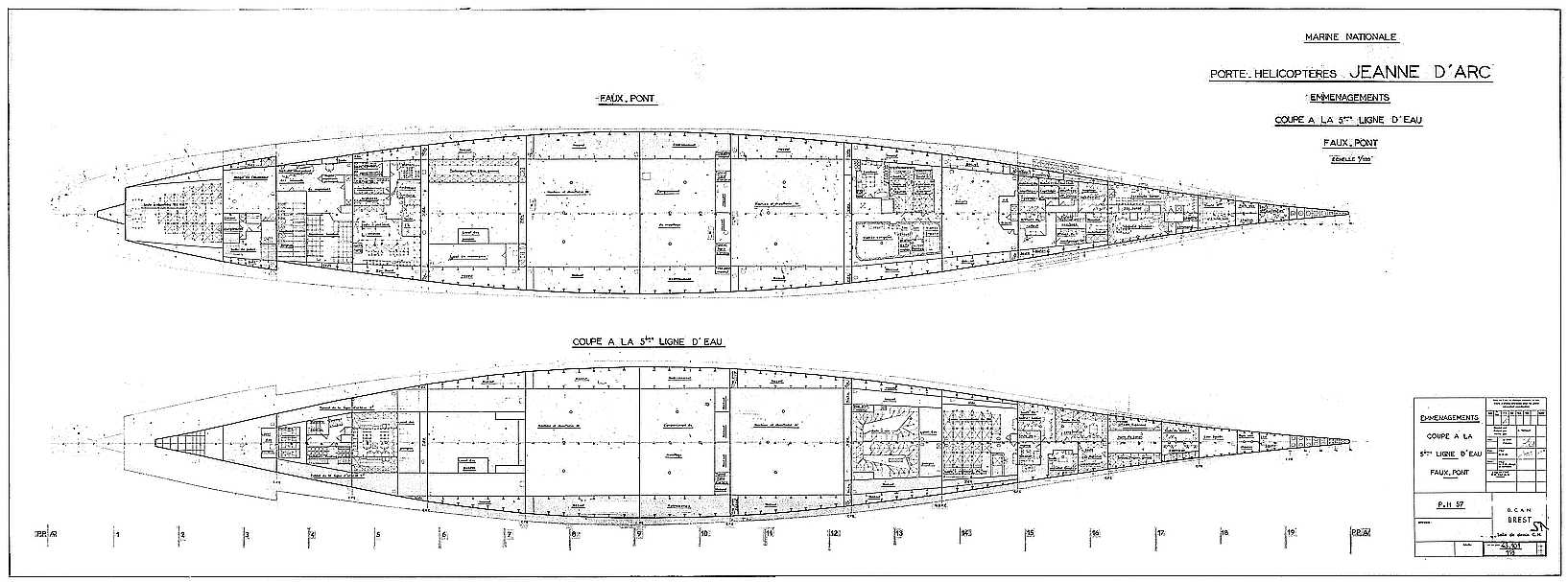
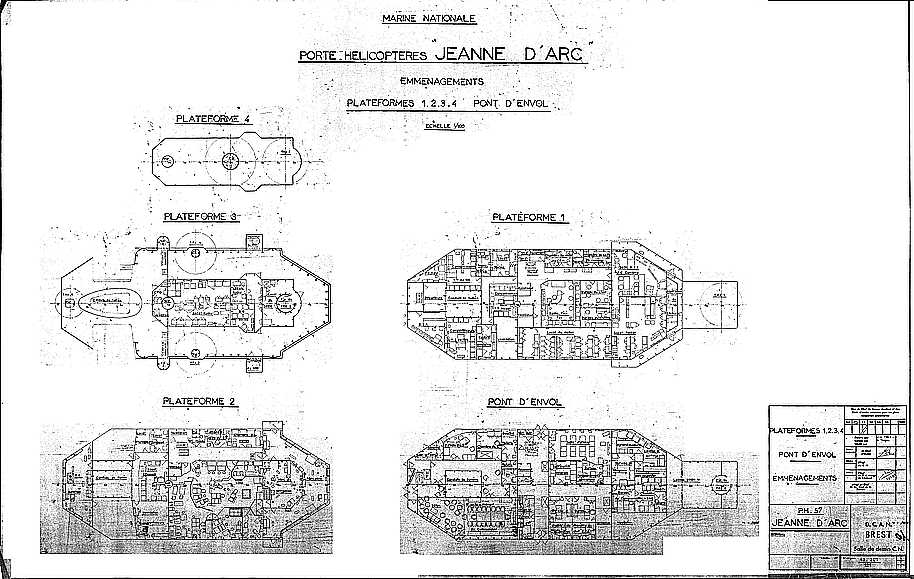


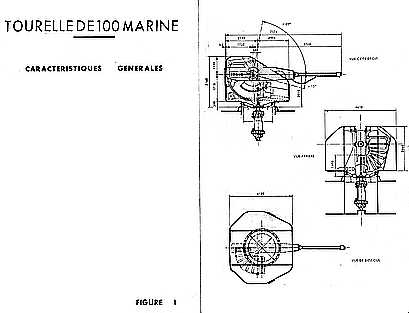




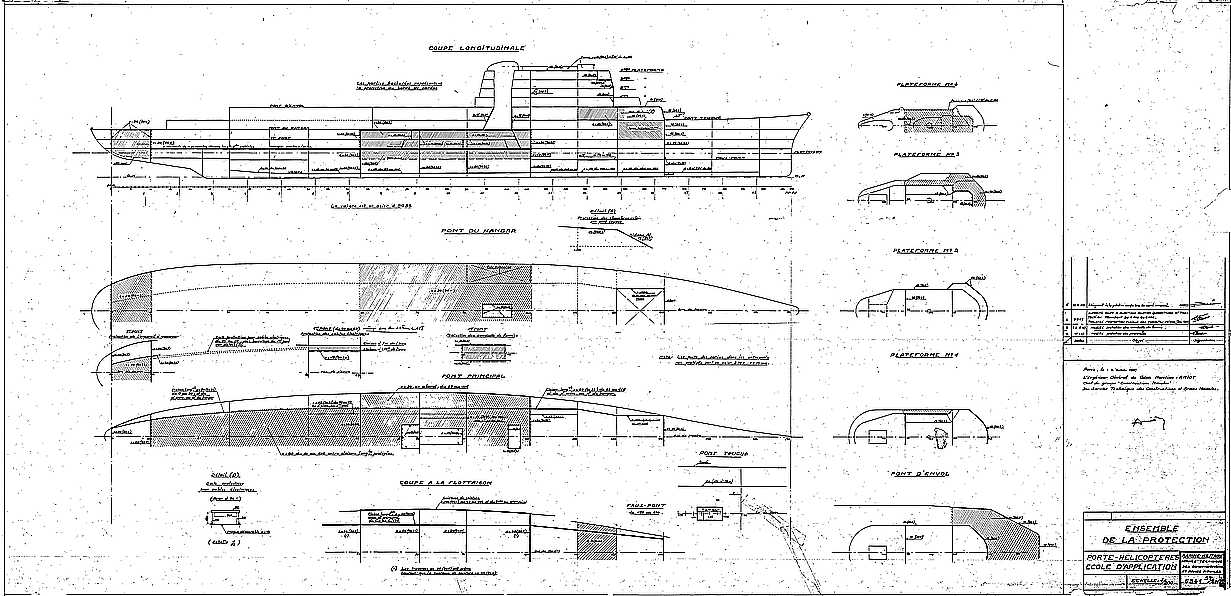
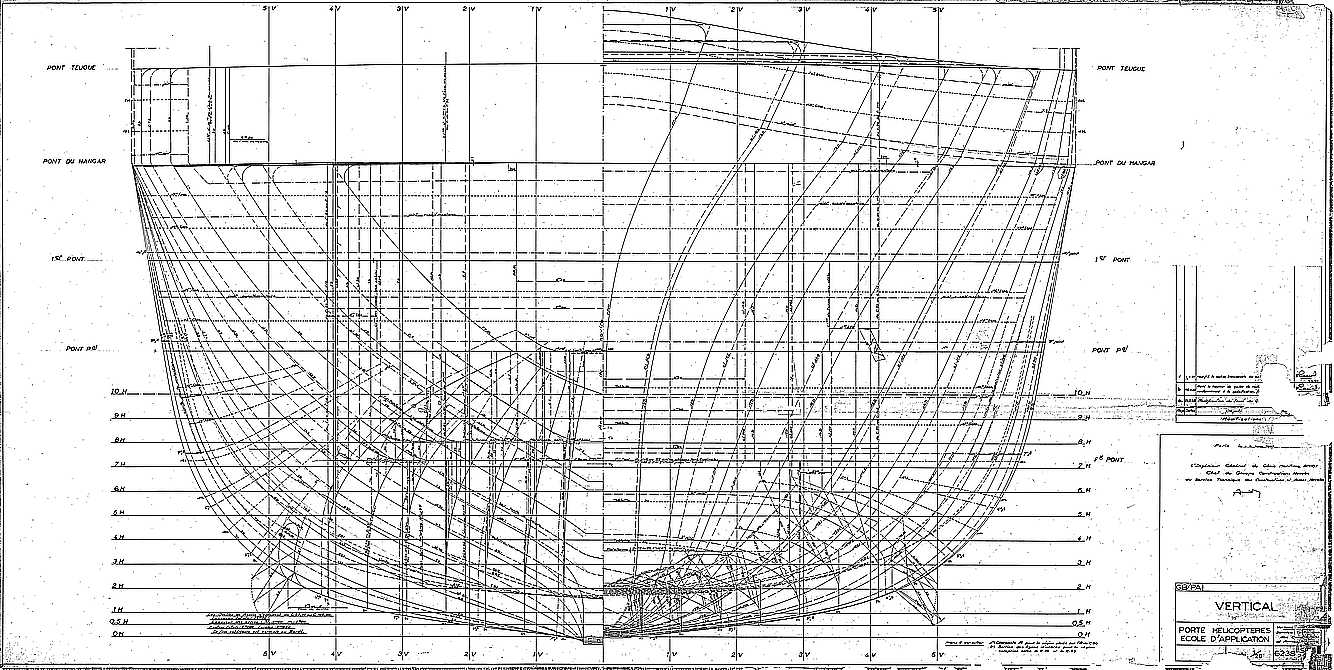


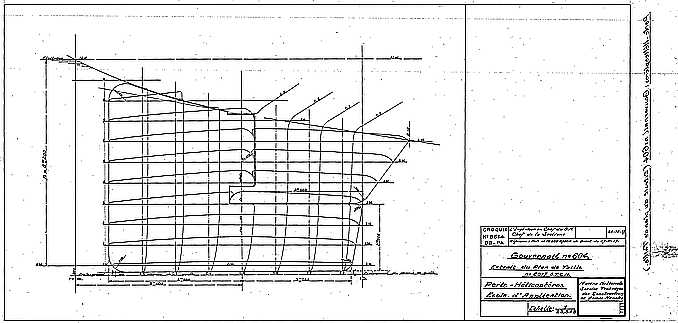


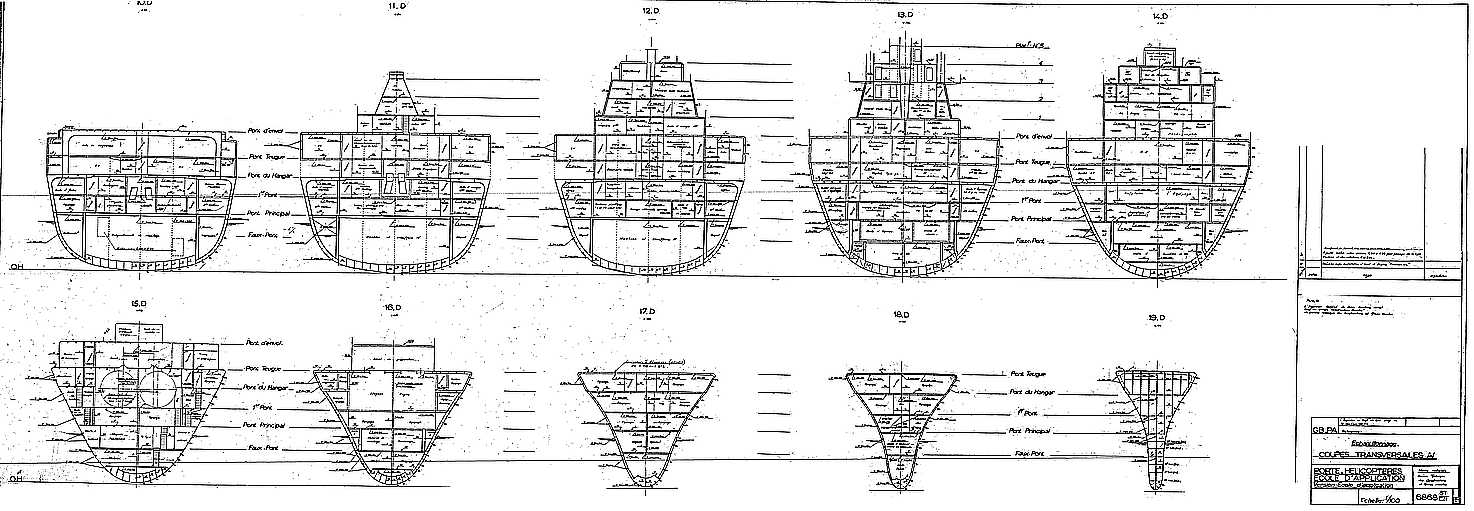


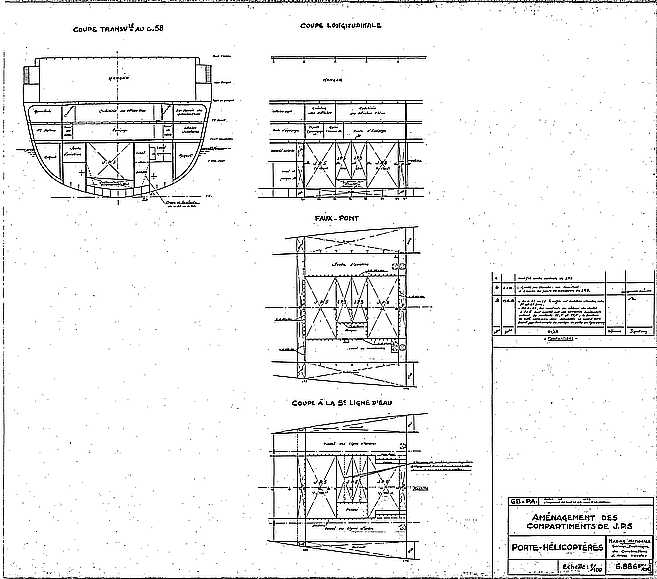
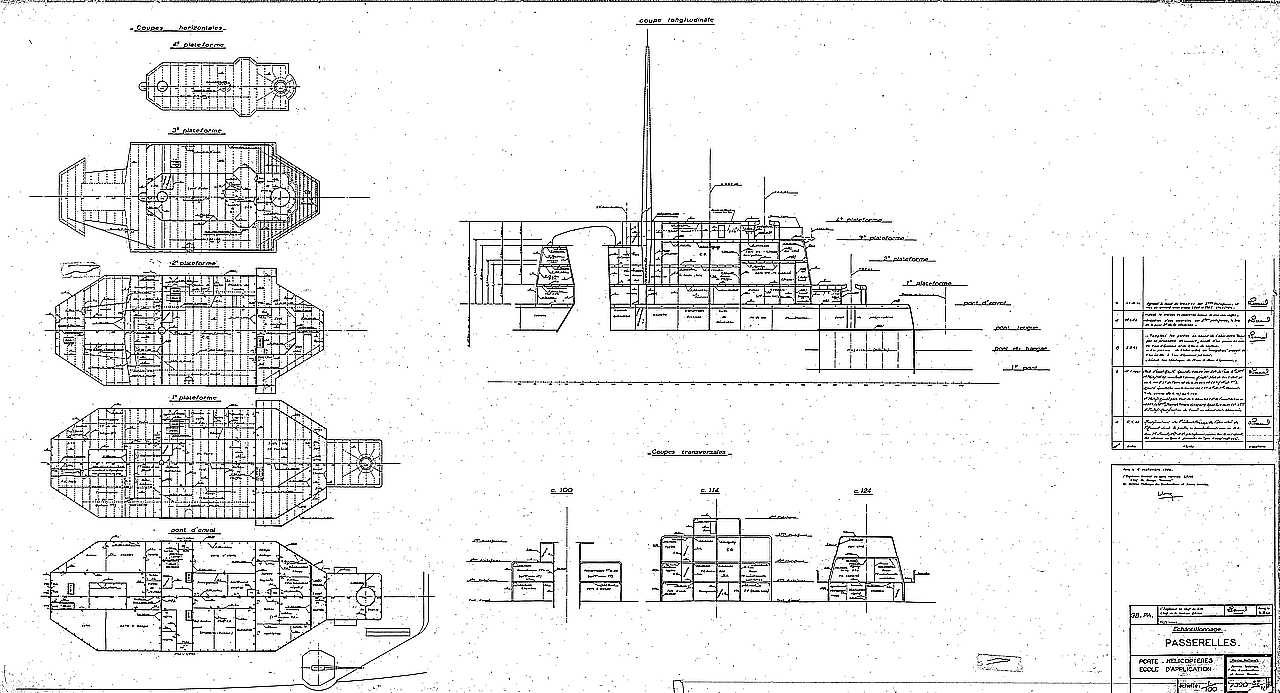

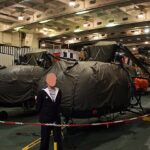
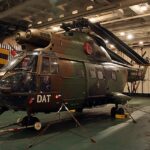
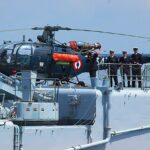
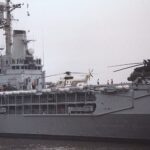
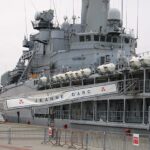
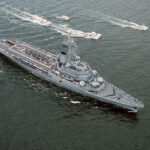
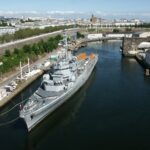
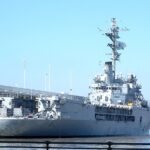
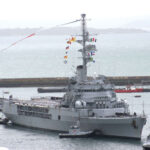
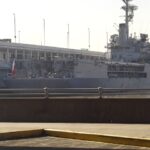
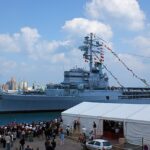
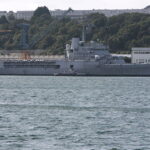
 Latest Facebook Entry -
Latest Facebook Entry -  X(Tweeter) Naval Encyclopedia's deck archive
X(Tweeter) Naval Encyclopedia's deck archive Instagram (@navalencyc)
Instagram (@navalencyc)





 French Navy
French Navy Royal Navy
Royal Navy Russian Navy
Russian Navy Armada Espanola
Armada Espanola Austrian Navy
Austrian Navy K.u.K. Kriegsmarine
K.u.K. Kriegsmarine Dansk Marine
Dansk Marine Nautiko Hellenon
Nautiko Hellenon Koninklije Marine 1870
Koninklije Marine 1870 Marinha do Brasil
Marinha do Brasil Osmanlı Donanması
Osmanlı Donanması Marina Do Peru
Marina Do Peru Marinha do Portugal
Marinha do Portugal Regia Marina 1870
Regia Marina 1870 Nihhon Kaigun 1870
Nihhon Kaigun 1870 Preußische Marine 1870
Preußische Marine 1870 Russkiy Flot 1870
Russkiy Flot 1870 Svenska marinen
Svenska marinen Søværnet
Søværnet Union Navy
Union Navy Confederate Navy
Confederate Navy Armada de Argentina
Armada de Argentina Imperial Chinese Navy
Imperial Chinese Navy Marinha do Portugal
Marinha do Portugal Mexico
Mexico Kaiserliche Marine
Kaiserliche Marine 1898 US Navy
1898 US Navy Sovietskiy Flot
Sovietskiy Flot Royal Canadian Navy
Royal Canadian Navy Royal Australian Navy
Royal Australian Navy RNZN Fleet
RNZN Fleet Chinese Navy 1937
Chinese Navy 1937 Kriegsmarine
Kriegsmarine Chilean Navy
Chilean Navy Danish Navy
Danish Navy Finnish Navy
Finnish Navy Hellenic Navy
Hellenic Navy Polish Navy
Polish Navy Romanian Navy
Romanian Navy Turkish Navy
Turkish Navy Royal Yugoslav Navy
Royal Yugoslav Navy Royal Thai Navy
Royal Thai Navy Minor Navies
Minor Navies Albania
Albania Austria
Austria Belgium
Belgium Columbia
Columbia Costa Rica
Costa Rica Cuba
Cuba Czechoslovakia
Czechoslovakia Dominican Republic
Dominican Republic Haiti
Haiti Hungary
Hungary Honduras
Honduras Estonia
Estonia Iceland
Iceland Eire
Eire Equador
Equador Iran
Iran Iraq
Iraq Latvia
Latvia Liberia
Liberia Lithuania
Lithuania Mandchukuo
Mandchukuo Morocco
Morocco Nicaragua
Nicaragua Persia
Persia San Salvador
San Salvador Sarawak
Sarawak Uruguay
Uruguay Venezuela
Venezuela Zanzibar
Zanzibar Warsaw Pact Navies
Warsaw Pact Navies Bulgaria
Bulgaria Hungary
Hungary

 Bundesmarine
Bundesmarine Dutch Navy
Dutch Navy Hellenic Navy
Hellenic Navy Marina Militare
Marina Militare Yugoslav Navy
Yugoslav Navy Chinese Navy
Chinese Navy Indian Navy
Indian Navy Indonesian Navy
Indonesian Navy JMSDF
JMSDF North Korean Navy
North Korean Navy Pakistani Navy
Pakistani Navy Philippines Navy
Philippines Navy ROKN
ROKN Rep. of Singapore Navy
Rep. of Singapore Navy Taiwanese Navy
Taiwanese Navy IDF Navy
IDF Navy Saudi Navy
Saudi Navy Royal New Zealand Navy
Royal New Zealand Navy Egyptian Navy
Egyptian Navy South African Navy
South African Navy






























 Ukrainian Navy
Ukrainian Navy dbodesign
dbodesign